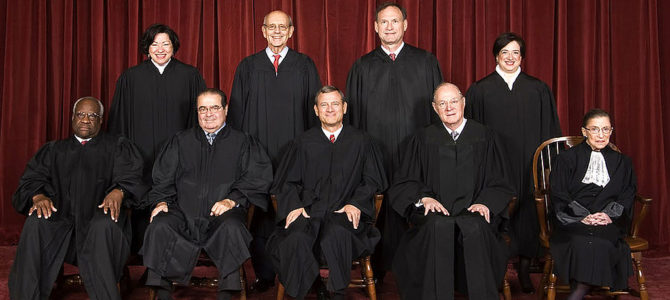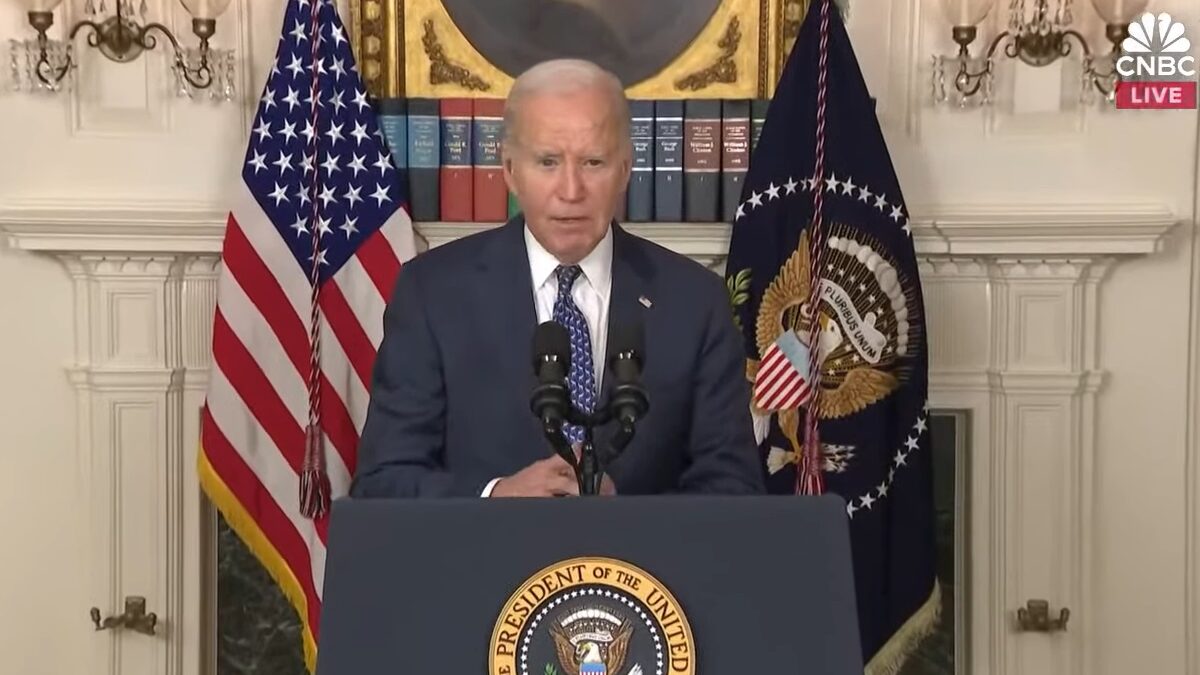
The idea of term limits for the Supreme Court has been floating around for a long time, even from the days of the Founding Fathers. It has recently resurfaced again, partly from earnest reformers and partly from leftists worried at the idea of another youngish judicial conservative joining the court for decades.
Apprehension about the court’s lifetime tenure is not overblown. Although it follows the Constitution to the letter, it is not unreasonable to say the founders did not envision so much power being vested in the hands of nine high priests of the law who rule from the lofty legal heights of the nation’s capital.
But rather than amend the Constitution to enact term limits for judges, which would weaken the independence of the judiciary, Congress should act to ensure the judges get out of D.C. more often and encourage them to leave office sooner than they currently do. The best way to do this is to restore the venerated tradition of circuit riding.
Lifetime Tenure Is Constitutional
The Constitution establishes lifetime tenure for judges for good reasons. Historically, the founders feared a powerful executive firing judges who ruled against his wishes. This problem was big enough in Britain and its colonies that it was one of the grievances included in the Declaration of Independence (“He has made Judges dependent on his Will alone, for the tenure of their offices, and the amount and payment of their salaries.”)
To avoid the same problem occurring with a president or Congress, the Constitution denies them the power over tenure and salary: “The Judges, both of the supreme and inferior Courts, shall hold their Offices during good Behaviour, and shall, at stated times, receive for their Services, a Compensation, which shall not be diminished during their continuance in Office.”
Alexander Hamilton explained the wisdom of this in Federalist 78, calling lifetime tenure an “excellent barrier to the encroachments and oppressions of the representative body. And it is the best expedient which can be devised in any government, to secure a steady, upright, and impartial administration of the laws.”
Without a constitutional amendment, Congress may not limit a judge’s term, (although some radicals have recently challenged even this obvious reading of the constitutional text). With lifetime tenure and guaranteed income, why would anyone leave the bench? Hamilton was correct that without lifetime tenure, judges would be tempted to bend their views toward what politicians want, which may be at odds with what justice required in the case before them. But that still leaves the problem of judges hanging on too long in office.
And they do hang on too long. In the 1990s, Ruth Bader Ginsburg was one of the sharpest minds on the court, but in the past few terms her decisions have been less well-considered, and her outside-the-court behavior, such as her involvement in the last presidential election, shows a want of discretion.
Fair observers from the right must admit the same could have been said of the late Antonin Scalia, portions of whose most recent opinions (“pure applesauce” and “ask the nearest hippie,” both in 2015,) were more knee-jerk responses than the carefully reasoned and forceful writing that have marked him as among the greatest of Supreme Court justices. Whether from the rigors of age or from becoming too comfortable in the job, these long-tenured justices declined in office.
Congress Should Restore Judicial Circuit Riding
So how do we square the circle? How do we insulate judges from political pressure while encouraging those well past their prime to exit the stage? One way is to make each justice less important by gradually expanding the court to 13 justices, as I wrote last year.
Another idea is to make the job more physically arduous. That doesn’t mean they should have to do 50 push-ups before reading an opinion from the bench. It means Congress should legislate a return to circuit riding.
Circuit riding has a long history in the United States, but has been defunct for so long that it is scarcely remembered today. There is evidence of its existence, though, in the name of the intermediate level of appeals courts: the circuit courts of appeal.
As originally designed, the federal judiciary had three levels of courts but only two levels of judges. The middle level was a collection of circuit courts, staffed by district court judges and Supreme Court justices in mixed panels. When their regular courts were not in session, the judges and justices would “ride circuit,” traveling around their designated region as a court of appeals.
Instead of the long summer vacation the current justices enjoy, early Supreme Court justices worked the whole year around, like normal adults. From the beginning, they hated it. Bumpy roads, crummy lodgings, and the long time away from their homes and families wore on the justices. Moreover, in those days, the job was not considered especially prestigious or high-paying. As a result, many justices got tired of the grind after a few years and quit.
The practice afforded benefits as well. Not only did Congress save the costs of an entire level of the judiciary, but circuit riding created an opportunity to send national figures into the states, exposing many citizens to the national authority for the first time.
As Joshua Glick noted in his comprehensive article on the subject, “Circuit riding transformed the justices into ‘republican schoolmasters’ who brought federal authority and national political views to the states. Equally important, circuit riding enhanced the justices’ ability to contribute to the formation of national law by exposing them to local political sentiments and legal practices.”
The growing volume of federal cases eventually required dedicated appeals court judges, so the practice of circuit riding ended in 1911. The Supreme Court also gained the power to choose which cases it heard, meaning that for most litigants, the appeals court was the final stop for their lawsuits. It also meant the job of Supreme Court justice, while not easy by any means, was now a great deal less demanding.
Justices Are Staying on the Bench Too Long
Other changes since that time have led to justices staying on the court ever longer. Where top lawyers once had to be cajoled into joining the court, the growing importance of federal litigation has made appellate courts the preferred destination for many ambitious attorneys. Advances in medical science have made it possible for people to live and work longer, especially if their jobs are not physically demanding. Further, each judge has three or four clerks where heor she once had only one, lightening the work load considerably.
All of this means justices are staying on the bench for a longer time — too long, in many people’s minds. Before 1970, the average justice served about 15 years, and vacancies occurred every other year. Since that time, the average tenure has ballooned to 25 years. Again, this is in accordance with the Constitution’s grant of life tenure, but it differs greatly from historical practice.
Restoring circuit duties to the Supreme Court would provide a natural way of decreasing tenure on the bench. Travel is not as difficult in 2019 as it was in 1819, but it can still be exhausting. If circuit riding had still been a part of the job, infirm justices such as William O. Douglas, William Brennan, and John Paul Stevens would have left the bench before they were fully in decline. Ginsburg would likely have retired a decade ago, as many on the left wish she had. Instead, arrogance and ease lead to justices remaining in their jobs when they are not up to the tasks appointed to them.
In a 2006 article, Steven Calabresi and David Presser proposed a modest restoration of circuit riding, just four weeks a year during what is now the justices’ summer vacation. Given the length of the court’s recess, an even longer circuit could easily be possible with still plenty of time for vacation. Combine this with a larger court, and it would allow one justice for each circuit, as used to be the case. The connection between justices and circuits might encourage a return to geographic diversity on the court, another old tradition that has fallen by the way since the circuit-riding days.
As Calabresi and Presser note, it’s undoubtedly constitutional: The court ruled as much in 1803 and spent the next century riding circuit. Also, retired Supreme Court justices still do it occasionally, including as recently as 2013, when retired Justice Sandra Day O’Connor sat with the Ninth Circuit.
There are no legal objections, and there really should be no practical objections, either. As Chief Justice John Roberts once said, “Only Supreme Court justices and schoolchildren are expected to and do take the entire summer off.” With such a highly coveted job, a few more duties will not discourage lawyers from aspiring to it. But it may, as those lawyers age, give them second thoughts about hanging on well past their prime.









